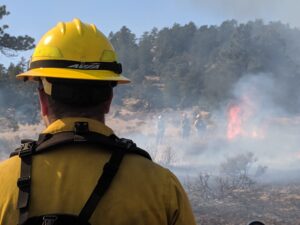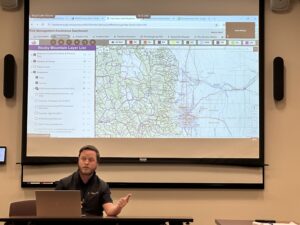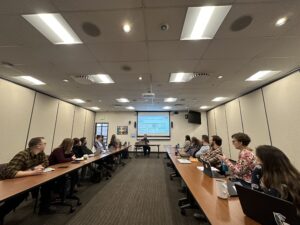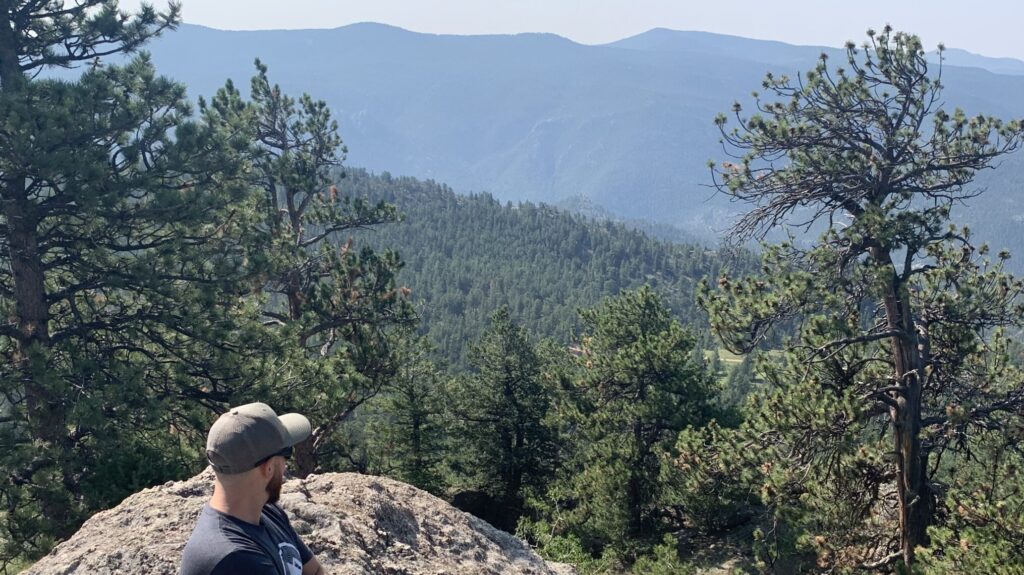In the heart of the Big Thompson watershed, a diverse group of partners has embarked on a pioneering journey to redefine the landscape of wildfire management and conservation. A recent gathering of the Big Thompson Watershed Health Partnership (BTWHP) marked a significant milestone in our collaborative efforts to utilize Potential Operational Delineations (PODs) as a strategic framework for enhancing landscape resilience and community preparedness against wildfires.
 The Stone Mountain POD: A Pilot for Progress
The Stone Mountain POD: A Pilot for Progress
The focal point of this collaborative endeavor is the Stone Mountain POD, encompassing the communities of Pole Hill and Waltonia. Identified in a previous strategic meeting as an important area of focus, this POD serves as the pilot project through which the partners aim to develop a replicable model for landscape-scale wildfire management and conservation efforts.
Guiding Principles and Goals
Max Erickson, Supervisory Forester for the Fort Collins Field Office of the Colorado State Forest Service, steered the discussion towards establishing a comprehensive set of goals aimed at integrating individual actions into a cohesive strategy. The objectives were clear:
- Developing a Replicable Framework: Crafting a process within an individual POD that can be mirrored across other areas, leveraging PODS as a strategic planning tool recognized by funders to gauge progress.
- Enhancing Mapping Data Utilization: Utilizing consistent mapping data to facilitate this process, including additional overlays like Community Wildfire Protection Plans and datasets for values at risk within the watershed.
- Aligning Actions with National Goals: Ensuring that individual efforts are categorized within the goals of the 2023 National Cohesive Wildland Fire Management Strategy (NCWFMS), focusing on resilient landscapes, fire-adapted communities, and risk-based wildfire response.
- Monitoring and Tracking for Success: Implementing tracking mechanisms to monitor opportunities, gaps, and progress through the NCWFMS lens, thereby reinforcing a Common Operating Picture.
The Power of Data and Community Engagement
 Erickson proposed the creation of a dedicated dashboard for each POD, aiming to foster targeted discussions regarding treatment types, locations, ownership and community readiness. This innovative approach seeks not only to streamline efforts but also to empower communities by transitioning the narrative from “Risk Reduction” to “Community Empowerment.”
Erickson proposed the creation of a dedicated dashboard for each POD, aiming to foster targeted discussions regarding treatment types, locations, ownership and community readiness. This innovative approach seeks not only to streamline efforts but also to empower communities by transitioning the narrative from “Risk Reduction” to “Community Empowerment.”
As the discussion unfolded, partners contemplated the utility of a dashboard, success indicators, and strategies for enhancing community engagement and resilience. The conversation highlighted the need for detailed storytelling, quantifying the human element of conservation efforts, and leveraging metrics such as the number of landowners willing to participate and the extent of community outreach.
Setting the Course: Next Steps
As the meeting drew to a close, partners outlined the next steps in their collaborative journey. The immediate focus will be on goal setting for the Stone Mountain POD, utilizing the NCWFMS strategy as a framework. Looking forward, partners were tasked with refining their objectives, ensuring they are poised to make substantial strides in wildfire management and community empowerment.
A Collective Vision for a Resilient Future
The innovative efforts by the Big Thompson Watershed Health Partnership signify a bold leap towards a future where landscapes are resilient, communities are prepared, and conservation is a collaborative endeavor. By embracing a model that prioritizes strategic planning, data-driven decision-making, and community engagement, the partners are paving the way for a sustainable and empowered landscape in the face of changing climatic challenges.
